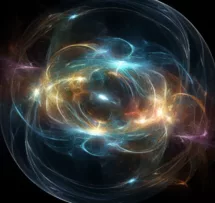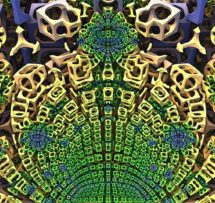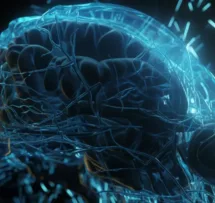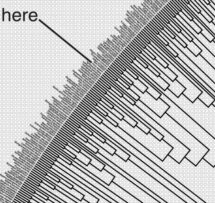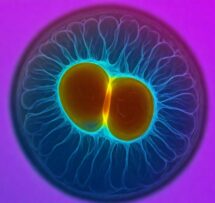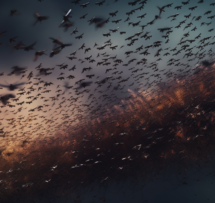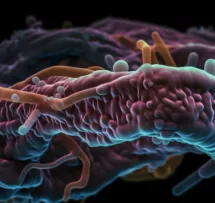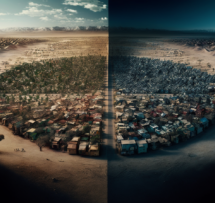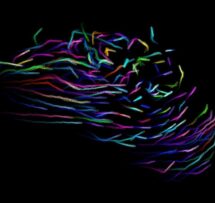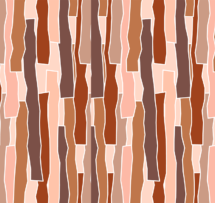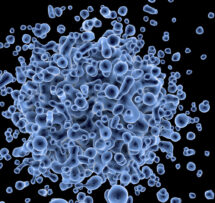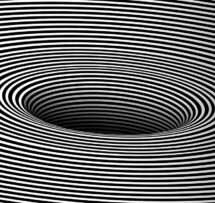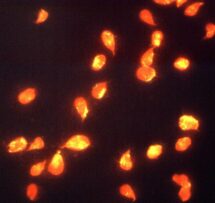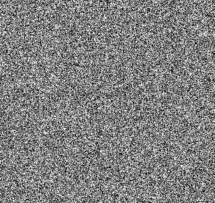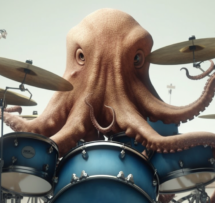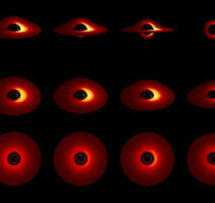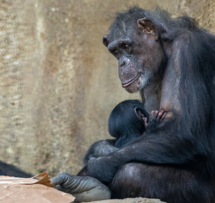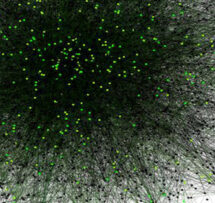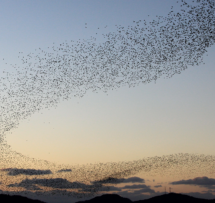The added risk of size: nanomaterials & nanoparticles

What have a motor helmet, airbags, sun crème, stained-glass, solar panels, paint, socks and medical bindings in common? What are nanomaterials? Are they a hopeless threat to our environment? Or are nanomaterials also a sustainable promise for the future? How do we prevent potential risks of nanoparticles and technological innovation? What do we know about the behaviour of nanoparticles and their uptake by tiny aquatic organisms such as daphnids, zebrafish larvae and microbes?
Nanomaterials are microscopically small particles 1-100 nanometres in size. To give you an idea: soap bubbles have a wall thickness of about 750 nanometres. Virtually any material can now be made at the nano-scale and they are seen as new promising materials; making products “green and clean”, because of their unique working mechanisms that come with the nano-sized scale.
But as we know from the past industrial era, in which myriad new chemicals were synthesised, anything new can have hidden drawbacks and dangers. Although growing concerns have led to many studies on nanotoxicology, the mechanisms underlying the toxicity of this new class of materials are still unclear. So once again we face the crucial question: do synthetic nanomaterials pose an insurmountable long-term risk to the environment? And the good thing is that we are now – maybe at the first time in life – are concomitantly developing the new nanotechnology as well as predicting the safety.
Therefore predicting risk for nanomaterials in prospective assessments means we need to work with future scenarios that must be predicted on the basis of scant knowledge and data. This means there are major inherent uncertainties. These uncertainties about the future are reduced once the technology reaches maturity – but that’s in hindsight. Looking back, we can perhaps say it would have been better to take a different course when we were developing plastics or certain pesticides, for instance, but by the time a product or technology’s out on the market there will have been major investments and possibly thousands of jobs created in the sector concerned. After a certain point it becomes increasingly hard to phase out manufacture and use of the product or technology – even if it’s not that great for the ecosystem. As humans, only rarely do we foresee the consequences of our actions.

Martina Vijver
The added risk of size: nanomaterials and nanoparticles
What have a motor helmet, airbags, sun crème, stained-glass, solar panels, paint, socks and medical bindings in common? What are nanomaterials? Are they a hopeless threat to our environment? Or are nanomaterials also a sustainable promise for the future? How do we prevent potential risks of nanoparticles and technological innovation? What do we know about the behaviour of nanoparticles and their uptake by tiny aquatic organisms such as daphnids, zebrafish larvae and microbes?
Martina Vijver
Martina Vijver
Martina Vijver is Professor of Ecotoxicology at Leiden University, Institute of Environmental Sciences. Obtaining realistic predictions and measurements of how existing and emerging chemical stressors potentially affect our natural environment and the organisms living therein is her the core business of her research. She is founder of the testing facility ‘Levend Lab’, or Living Lab. She is work package leader of the EU-funded project Horizon2020 PATROLS. She received the individual grants of the Dutch NWO Veni (2008), ASPASIA (2013), VIDI (2014) and Westerdijk (2017). She is the chair of the network Researchers In Science for Equality (RISE).

Letric Letric
Letric Letric
Letric Letric are an Amsterdam-based band with a spacey sound. With their tight drumgrooves and mystic melodies they create indie rock with a cosmic edge. Their performances are highly energetic and stay surprising. Letric Letric consists of Fabienne Julie Verhoeff, Sweder Al, Sem van Gennip, Daan Hutting and Chaim Wackie Eysten. The band played their song 'Cater Waiter' on radio station 3FM earlier this year and their second single 'Honolulu Spaceship' is coming out soon.



